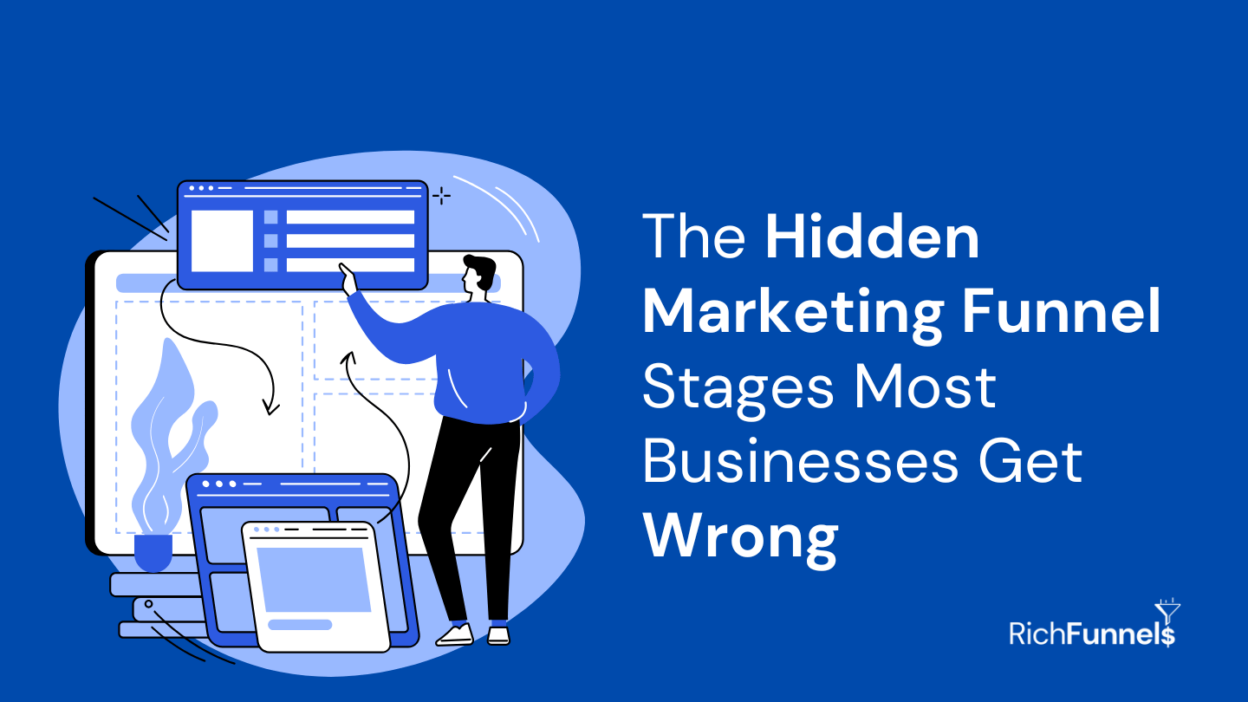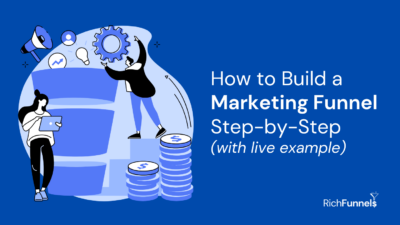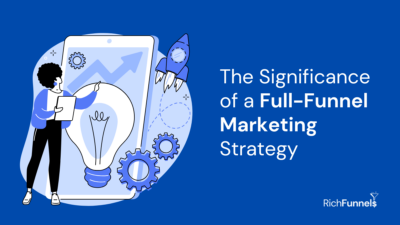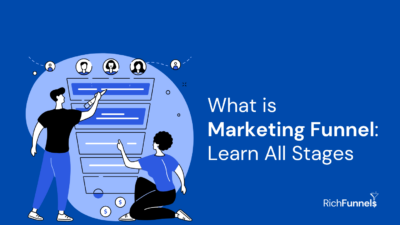Most businesses believe they’ve mastered their marketing funnel stages, yet studies show that 68% of companies have never attempted to measure their entire funnel. This disconnect reveals a troubling blind spot in how organizations approach their customer journey.
The reality is that traditional marketing funnel stages often contain hidden gaps that silently drain potential revenue. These overlooked elements go far beyond basic metrics, affecting everything from customer engagement to final conversion rates. Understanding these critical yet commonly missed components can mean the difference between a thriving business and one that struggles to convert prospects into customers.
This comprehensive guide examines the hidden pitfalls within marketing funnels and provides actionable solutions to fix them. We’ll explore the psychological triggers, optimization techniques, and advanced strategies that transform a leaky funnel into a high-performing conversion machine.
The Silent Conversion Killers in Your Marketing Funnel
Initially, businesses often overlook critical conversion barriers while focusing solely on driving traffic to their websites. In fact, the average cart abandonment rate exceeds 69%, highlighting a significant gap between visitor attraction and actual conversions.
Common misconceptions about funnel stages
Many marketers mistakenly believe that:
- More traffic automatically equals more sales
- A single funnel works for all products
- Automation alone solves conversion problems
- Long funnels are always more effective
Hidden friction points causing drop-offs
Furthermore, website performance plays a crucial role in conversion success. A mere one-second delay in load time can decrease conversion rates by 20%. Similarly, Adobe’s research reveals that 41% of visitors abandon content that loads too slowly.
Above all, the checkout process presents numerous hidden friction points. Approximately 49% of potential customers abandon their purchase due to unexpected costs, while 24% leave when forced to create an account. These seemingly minor obstacles create substantial barriers in the customer journey.
Impact of overlooked funnel elements on revenue
The financial impact of these overlooked elements is substantial. Consider that 70% of consumers research brands before making purchase decisions. Consequently, the absence of proper social proof can significantly impact revenue – research shows that adding social proof to product pages can boost conversions by 190% to 380%.
Security concerns represent another often-overlooked revenue killer. With 91% of US consumers worried about cybersecurity, businesses that fail to address these concerns face significant trust barriers. This anxiety directly affects purchasing decisions and overall conversion rates.
To put it differently, these hidden conversion killers often manifest in subtle ways. For instance, poorly written calls-to-action (CTAs) and unclear value propositions can silently erode your funnel’s effectiveness. When combined with technical issues and trust barriers, these elements create a compound effect that significantly impacts your bottom line.
Diagnosing Broken Funnel Stages
Spotting a broken marketing funnel requires both data and intuition. According to research, 42% of visitors decide whether to stay or leave a website within just 10 seconds, making early diagnosis crucial.
Key symptoms of dysfunctional funnel stages
A dysfunctional marketing funnel often shows these warning signs:
- Unusually high bounce rates at specific stages
- Inconsistent messaging across channels
- Poor quality traffic despite high volume
- Extended sales cycles with low closure rates
Specifically, if you’re seeing substantial website traffic but minimal conversions, your content might be attracting the wrong audience or failing to communicate value effectively.
Using analytics to identify problem areas
Understanding your funnel requires both quantitative and qualitative data 3. During analysis, focus on:
| Metric Type | What to Track |
|---|---|
| Behavioral | Page views, exit rates, time on page |
| Conversion | Stage-to-stage progression rates |
| Engagement | Scroll depth, click patterns, form completions |
Generally, traditional analytics tools excel at tracking numerical metrics, nevertheless, they miss crucial qualitative insights about user experience. Session recordings can reveal frustration indicators like rapid clicking or form abandonment patterns.
Common patterns of funnel failure
According to studies, 60% of potential customers abandon purchases specifically because of poor website experience. Additionally, research shows that businesses focusing solely on lead generation without proper qualification waste valuable resources.
Some recurring failure patterns include:
- Misaligned Value Proposition: When your messaging doesn’t address customer pain points effectively
- Single Channel Dependency: Relying too heavily on one traffic source creates vulnerability
- Poor Lead Quality: Studies indicate that only 25% of generated leads might be worth pursuing
Accordingly, businesses should implement regular funnel audits. Research indicates that companies conducting periodic funnel analysis are better positioned to identify and fix conversion bottlenecks.
The Psychology Behind Successful Funnel Transitions
The psychology behind successful marketing funnel transitions goes deeper than mere metrics and analytics. Research shows that 95% of purchase decisions happen in the subconscious mind, making psychological understanding crucial for funnel optimization.
Understanding customer mindset at each stage
Every stage of the marketing funnel represents a distinct psychological state. Indeed, studies indicate that customers drag their feet and hesitate not because of service quality, rather due to subtle psychological factors they often don’t realize.
The customer journey typically involves these mindset shifts:
- Awareness: Moving from problem recognition to solution seeking
- Consideration: Transitioning from exploration to evaluation
- Decision: Shifting from comparison to commitment
Emotional triggers that drive stage progression
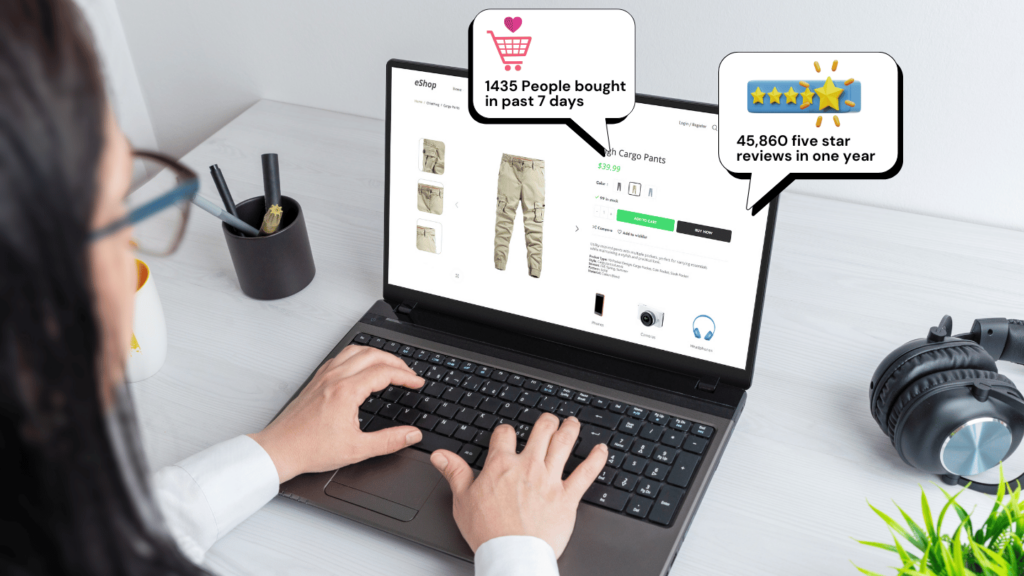
Psychological research reveals specific emotional triggers that drive customers through funnel stages. Moreover, studies show that incorporating social proof can boost conversions by up to 380%. Here’s how different triggers affect progression:
| Emotional Trigger | Impact on Progression |
|---|---|
| Trust | 91% of consumers consider trust crucial |
| Reciprocity | Increases engagement through value exchange |
| Fear of Missing Out | Drives urgent decision-making |
| Belonging | Strengthens brand connection |
Addressing psychological barriers to conversion
Particularly important is understanding the four main psychological barriers that prevent conversions. Research indicates that cynicism, skepticism, procrastination, and price concerns are the primary obstacles.
Subsequently, successful funnel optimization requires addressing these barriers through:
- Trust Building: Establishing credibility through transparency and social proof
- Value Demonstration: Showing clear ROI to overcome price sensitivity
- Urgency Creation: Using scarcity principles ethically
- Friction Reduction: Making the conversion process seamless
Coupled with proper emotional engagement, businesses that focus on psychological aspects see increased client loyalty and satisfaction. Studies confirm that customers who experience personal and professional gains are more likely to become brand advocates.
As opposed to traditional funnel metrics, psychological optimization focuses on understanding and addressing the emotional journey. Research shows that B2B buyers, particularly, respond to marketing that acknowledges their emotional drivers, making psychological understanding essential for successful funnel transitions.
Fixing the Hidden Gaps in Your Funnel
Successful marketing funnel optimization requires a systematic approach to identifying and fixing gaps. Research shows that companies conducting regular funnel analysis are 23% more likely to exceed their revenue goals.
Optimizing stage-to-stage transitions
Straightaway, the key to smooth funnel transitions lies in understanding user behavior patterns. Studies indicate that analyzing heat maps and session recordings can reveal exactly where users encounter friction points.
Essential optimization elements include:
- Strategic visual elements and compelling copy
- Effective calls-to-action placement
- Mobile-responsive design optimization
- Minimal form fields with maximum impact
Creating seamless customer experiences
Therefore, creating a cohesive customer journey requires aligning every touchpoint. Data shows that businesses focusing on seamless experiences see a 190% increase in customer engagement.
Meanwhile, successful implementation depends on three core components:
- Consistent messaging across all channels
- Proactive communication strategies
- Personalized content delivery
Likewise, implementing automation at key touchpoints helps maintain engagement. Research indicates that companies using marketing automation see a significant improvement in lead quality.
Tools and techniques for gap analysis
Soon, identifying gaps becomes manageable with the right tools. Here’s a comparison of essential gap analysis techniques:
| Analysis Type | Primary Use | Key Benefit |
|---|---|---|
| Funnel Analysis | Track conversion paths | Identifies drop-off points |
| Heatmaps | User behavior tracking | Shows engagement patterns |
| Session Recording | Interaction analysis | Reveals friction points |
Otherwise, businesses risk missing critical optimization opportunities. Studies show that companies using comprehensive analytics tools are 58% more likely to meet conversion goals.
Until you establish proper tracking mechanisms, measuring improvement becomes challenging. Research indicates that regular A/B testing can increase conversion rates by up to 25%. Lastly, implementing these strategies requires continuous monitoring and refinement, as data shows that companies performing ongoing optimization see 3x better results.
Advanced Strategies for Funnel Stage Optimization
Personalization stands at the forefront of advanced funnel optimization, with studies showing that segmented and targeted emails generate 58% of all revenue.
Personalization techniques for each stage
Primarily, successful personalization requires understanding user behavior at each funnel stage. Companies implementing welcome surveys and segmentation based on use cases see significant improvements in conversion rates.
The most effective personalization strategies include:
- Tailoring content based on user behavior and interests
- Implementing interactive walkthroughs for new users
- Creating segment-specific messaging
- Delivering contextual in-app experiences
Notably, businesses using advanced segmentation techniques report conversion rates up to 26% higher through retargeting efforts.
Automation opportunities for smooth transitions
Automation plays a vital role in funnel optimization, especially in maintaining consistent engagement. A comprehensive automation strategy should include:
| Automation Focus | Implementation Strategy | Expected Outcome |
|---|---|---|
| Lead Nurturing | Triggered emails based on behavior | Higher engagement rates |
| Content Delivery | Dynamic content personalization | Improved relevance |
| User Onboarding | Interactive walkthroughs | Faster activation |
| Follow-up Systems | Automated response mechanisms | Reduced drop-offs |
Certainly, the impact of automation extends beyond efficiency. Research indicates that companies utilizing marketing automation see marked improvements in lead quality.
Testing and iteration frameworks
Although testing is crucial, only a structured approach yields meaningful results. Heat mapping and user behavior analysis reveal that successful testing frameworks incorporate:
- Quantitative Analysis
- Conversion event tracking
- Path analysis for identifying optimal routes
- Feature usage metrics
- Qualitative Feedback
- NPS surveys
- Customer satisfaction metrics
- User experience feedback
Especially important is the implementation of continuous feedback loops. Studies show that companies collecting regular feedback through contextual surveys are better positioned to optimize their funnels effectively.
The role of analytics cannot be understated in this process. Organizations utilizing advanced product analytics to monitor in-app behavior report significant improvements in funnel performance. Hence, implementing tools that track both macro and micro conversions becomes essential for comprehensive optimization.
Alternatively, businesses can focus on specific stage optimization. For instance, revenue stage optimization should be based on product usage patterns and positive NPS scores rather than random upsell attempts.
Ultimately, the success of these advanced strategies relies on proper implementation and monitoring. Research indicates that companies implementing personalized in-app messages based on user segments and behavior patterns see substantial improvements in engagement and conversion rates.
Conclusion
Marketing funnels hold more complexity than most businesses realize. Data shows that companies implementing comprehensive funnel optimization strategies achieve significantly better results across all stages. Rather than viewing your funnel as a simple linear path, consider it a dynamic system that requires constant attention and refinement.
Success lies in addressing both technical and psychological aspects of your funnel. Through proper analytics implementation, regular testing, and strategic personalization, businesses can transform underperforming funnels into powerful conversion engines. Studies consistently demonstrate that organizations taking this holistic approach see up to three times better results than those focusing solely on basic metrics.
The most effective funnel optimization combines careful analysis with strategic implementation. Start by identifying your specific conversion barriers, then systematically address each one through targeted improvements. Remember that seemingly minor elements like page load times, trust signals, and psychological triggers can significantly impact your overall conversion rates.
Lastly, maintaining a well-optimized funnel requires dedication to continuous improvement. Companies that regularly analyze their funnel performance, test new approaches, and adapt to changing customer needs consistently outperform their competitors. Focus on creating seamless experiences across all touchpoints while maintaining strong alignment between your messaging and customer expectations.


